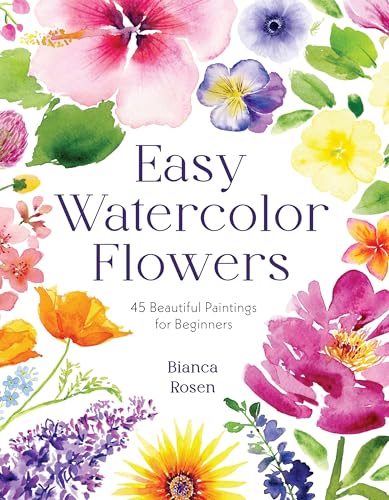Watercolor for Beginners: Workbooks and Supplies
Dive into Watercolor: Beginner-Friendly Workbooks and Essential Supplies 
Watercolor painting is a beautiful and rewarding hobby, but it can sometimes feel intimidating for beginners. Luckily, there’s a growing market of beginner-friendly workbooks and essential supplies designed to make learning watercolor easier and more enjoyable. This article explores watercolor workbooks like the Ugalqan Watercolor Workbook and delves into other crucial items for aspiring watercolor artists.
Beginner-Friendly Watercolor Workbooks: Your Art Journey Starts Here! 
Watercolor workbooks specifically designed for beginners are a fantastic resource. They provide structured lessons, practice exercises, and helpful tips to guide you through the fundamentals.
What Makes a Workbook “Beginner-Friendly”?
- Step-by-Step Instructions: Clear, concise instructions that break down complex techniques into manageable steps.
- Pre-Printed Outlines: Many workbooks include pre-printed outlines or shapes to help you focus on color mixing and brush control. This eliminates the pressure of drawing, allowing you to concentrate on the painting process.
- Color Charts and Mixing Guides: Essential for learning how to create different hues and values.
- Practical Exercises: These help you build skills and confidence through repetition and application of learned techniques.
- Variety of Subjects: Offers exposure to diverse subjects like landscapes, florals, and still life to discover your preferences.
The Ugalqan Watercolor Workbook: A Closer Look
The Ugalqan Watercolor Workbook, available on Amazon, is an example of a workbook tailored to beginners. While specific details might vary based on the latest version, it likely incorporates many of the features listed above, providing a solid foundation for learning watercolor. Look for reviews and product descriptions to confirm its specific content.
Essential Watercolor Supplies for Beginners: Beyond the Workbook 
While a good workbook is invaluable, you’ll also need the right art supplies to bring your watercolor visions to life.
Watercolor Paints: Tubes vs. Pans
- Tubes: Offer greater color intensity and allow for easier mixing of larger quantities of paint. Ideal for those who prefer to create their own palette.
- Pans: Convenient and portable, perfect for beginners and on-the-go painting. Palette-style sets with pre-filled pans are a great starting point.
Watercolor Brushes: Size and Shape Matter
- Round Brushes: Versatile for detail work, lines, and washes.
- Flat Brushes: Useful for broad washes, backgrounds, and creating even strokes.
- Filbert Brushes: A blend of round and flat, good for creating soft edges and shapes.
Watercolor Paper: The Foundation of Your Artwork
- Cold Press: Textured surface, ideal for beginners and general watercolor painting. It holds water well and creates interesting effects.
- Hot Press: Smooth surface, best for detailed work and fine lines.
- Rough: Highly textured surface, creates dramatic effects and is often used for landscapes.
Additional Supplies: Completing Your Toolkit
- Palette: For mixing paints. A ceramic plate or a plastic palette with wells works well.
- Water Container: Two containers are recommended: one for rinsing your brush and one for clean water.
- Paper Towels or Cloth: For dabbing excess water from your brush and cleaning up spills.
- Masking Tape: To secure your paper to a board or table and create clean edges.
- Pencil and Eraser: For sketching your composition before painting.
Embracing the Watercolor Journey: Tips for Beginners 
- Start Simple: Don’t try to tackle complex paintings right away. Focus on basic techniques like washes, layering, and color mixing.
- Practice Regularly: Consistent practice is key to improving your skills. Even short painting sessions can make a difference.
- Experiment with Techniques: Don’t be afraid to try new things and explore different watercolor techniques.
- Embrace Mistakes: Mistakes are a natural part of the learning process. Learn from them and keep going.
- Find Inspiration: Look at the work of other watercolor artists and find inspiration in the world around you.
With the right workbook, essential supplies, and a little bit of patience, you can embark on a fulfilling watercolor journey and unlock your artistic potential. Happy painting!






Post Comment